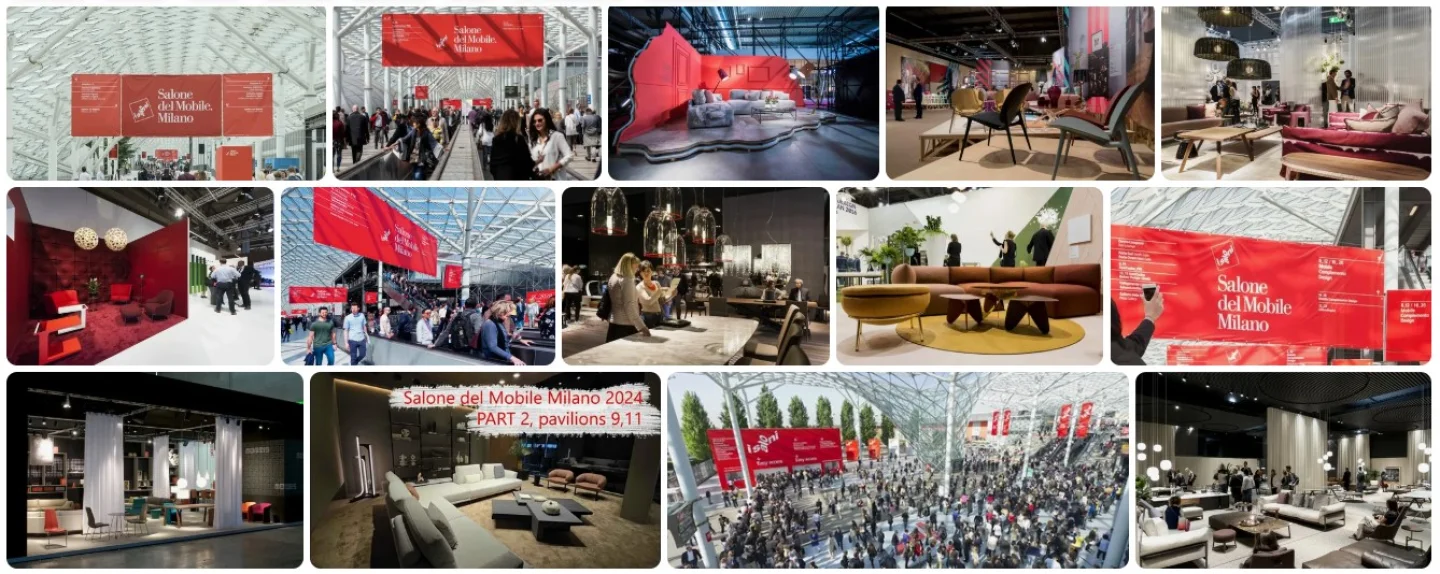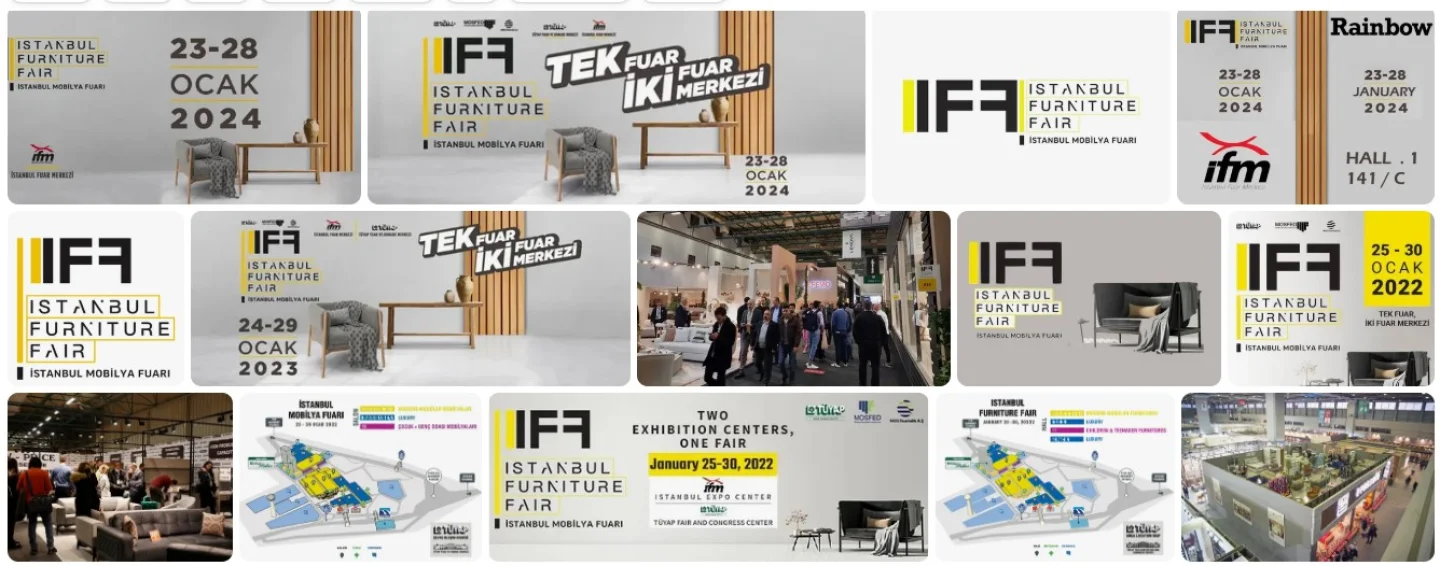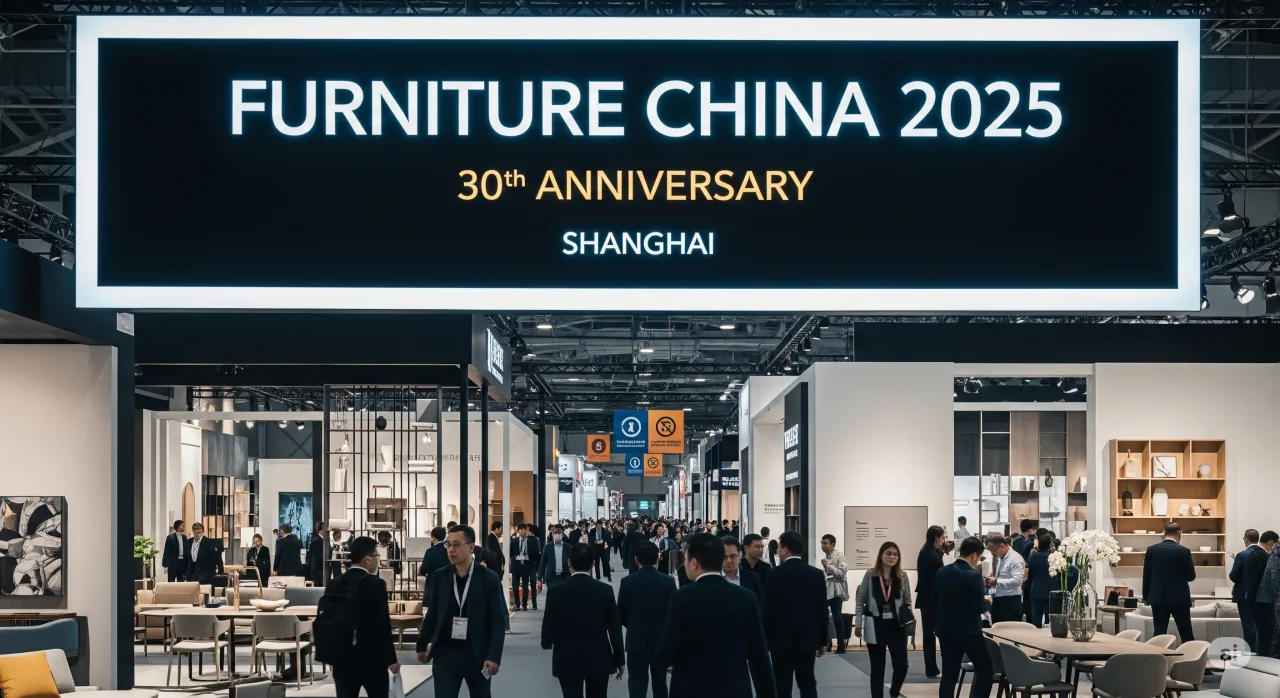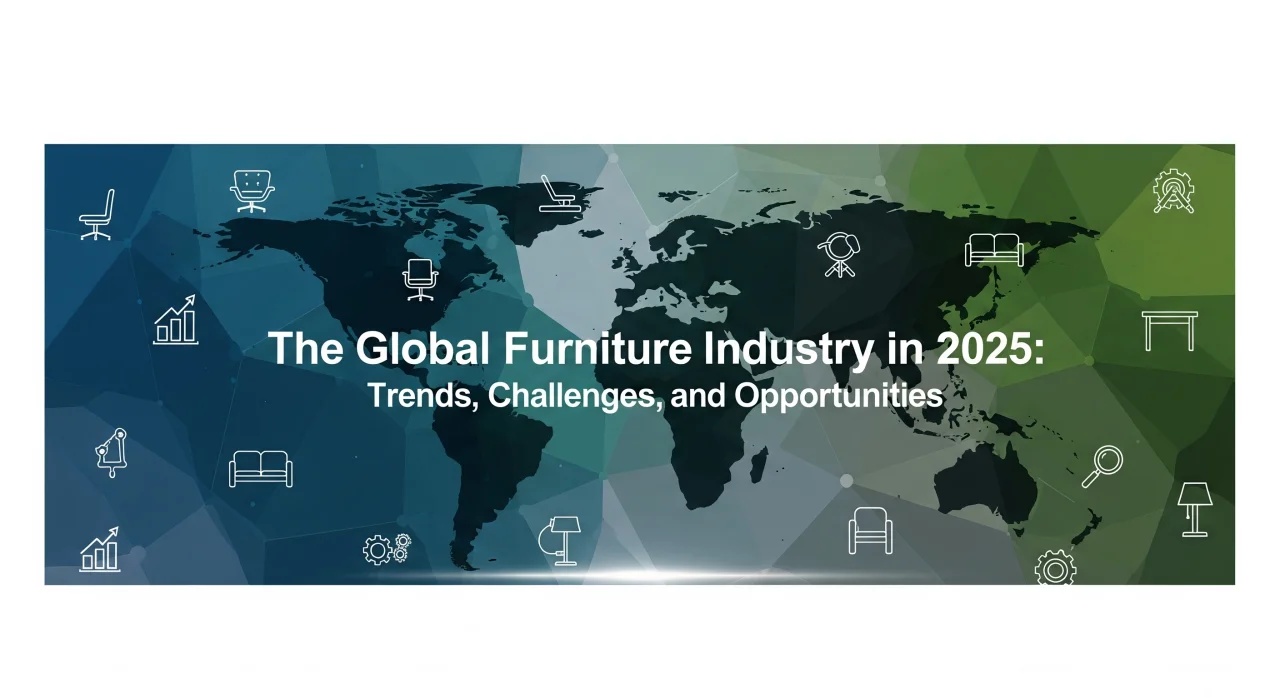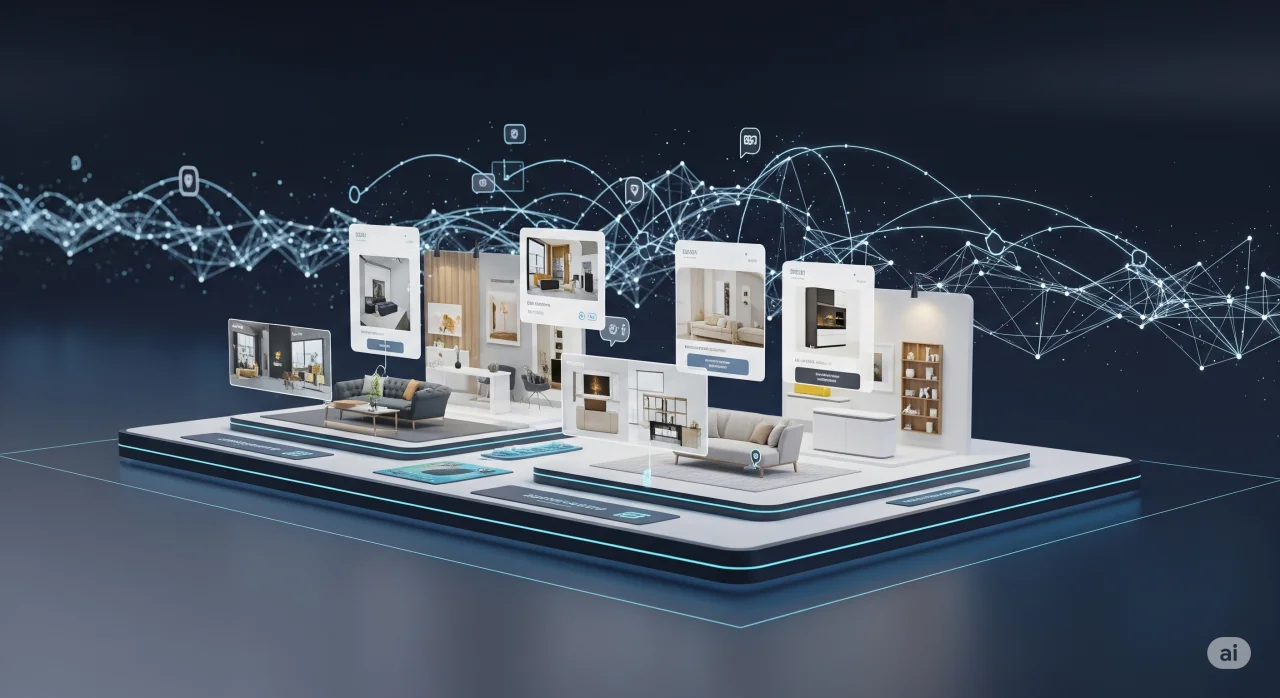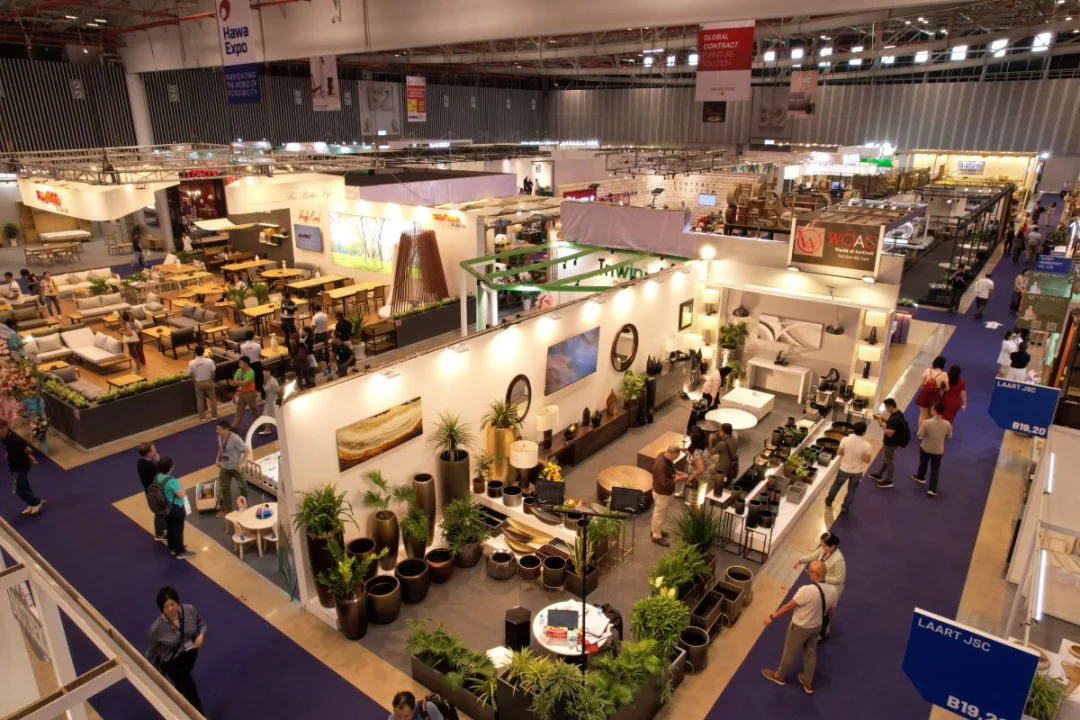The Milan Furniture Fair 2024 once again asserted its status as the epicenter of global design, showcasing cutting-edge trends, groundbreaking innovations, and an unparalleled creative spirit. As the world’s most prestigious design event, it serves as a dynamic platform for industry leaders, emerging designers, and forward-thinking brands to unveil their latest works and ideas. This year’s fair was a testament to the evolving landscape of design, where sustainability, technological advancements, and artistic experimentation converged to redefine both form and function. With a remarkable blend of tradition and modernity, the event provided valuable insights into the future of furniture design, reflecting the growing demands of an environmentally conscious and tech-savvy global audience. In this analysis, we delve into the key themes, trends, and innovations that shaped this year’s extraordinary showcase, highlighting its enduring influence on the design world.
- 1. Introduction to the Milan Furniture Fair
- 1.1. Historical Significance and Evolution
- 2. Key Themes and Trends in Design
- 2.1. Sustainability and Eco-Friendly Design
- 3. Innovative Materials and Technologies
- 3.1. Smart Furniture and IoT Integration
- 4. Designers and Brands at the Forefront
- 4.1. Emerging Designers and Their Impact
- 5. Conclusion and Future Prospects
1. Introduction to the Milan Furniture Fair
The Milan Furniture Fair is the most important event in the world of design and furnishings. It is here that companies can present their products to the largest number of visitors, both professional and merely curious, in the hope of finding design trends and directions in the coming months. They are often stylistic markers and much more. Being in Milan during the furniture fair week means immersing yourself in design explained in all its declinations, even the least imaginable. An extraordinary creative operation that manages to express itself in various fields, from visual art to sound and production.
Milan becomes the most international design meeting point where the most important events on the scene are artists and creatives. The event has now become an essential appointment, both from the point of view of trends and from the point of view of that remarkable commercial infiltration that the fair generates for the city. The Salone is accessed by designer studios and companies for free; the audience is incredibly varied and ready to interact to generate new designs and products. It is therefore surprising that an event like this can evolve, introduce new design ideas, and yet resist extreme consumer confusion. Salone 2024 has confirmed itself as a real event. Every year, the visitors to the fair and the many meetings, conferences, and workshops triple the number of inhabitants in Milan.
Being here to participate in this event today is a real commitment with a full schedule or, conversely, to wander according to choices that happen spontaneously, thus creating an involuntary program. The attitude that guided the presentation of more and more projects in the Milanese neighborhoods, from Basket to Dordoni Architects, from Sintesi to the group that participated in the competition, only too clearly indicated the desire to be as real and close as possible to the broader and younger creative community.
1.1. Historical Significance and Evolution
The Salone del Mobile has been one of the linchpins of the Milan Furniture Fair since its inception, and the fair itself this year is about, above all, furniture. It is thanks to it that the fair left Rho and moved to the historical site of 40 years of the Milan Trade Fair, at the entrance of Pantalone Avenue. So it is impossible not to look at the past to understand the present. This is why a historic exposition titled “First. Manifesto of the Italian Design” was held in 1997, even though it was only in its fourth year, or, in 2014, a complex review of all the 53 design years of the fair until then, to define the current state of a successful event of appreciation, valorization, and buying. This retrospective overview of the fair - that this text is dedicated to – will be about the interesting ephemeral glory that reveals the state of the art, and the gestation of cultural and aesthetic tendencies.
From a national trade fair, the Milan Furniture Fair has now become synonymous with a global design phenomenon and itinerary. The doubling of visitor numbers from 1985 – foot traffic was 53,000 in 1961 and 145,000 in 1985 – is due to foreign attendees from the industry, particularly from Northern European countries since 1970, even peaking at 324,000 in 1971. Up until 1978, 130 design fairs were established in Europe, and for 43% of these, the Milan Furniture Fair was the chief influencer. In fact, the ideas previewed in the last week of April populate the market and dictate the shapes of cars in the years to come - the 1952 Autosalon is the first example, a showcase – and even the architecture of the Cannes festival guests’ palaces (every sofa reproduces the attending diva’s measurements with greater certainty than does the Barbie doll replicas 50 years on). A preview of floor styles, showcased in the subwoofer basement at this Salone is still underused 30 years on in the widest Gallarate Gothic Duomo in the whole of Italy. It is one of the many truths, some unusual, underlining the fact that one like today in Berlusconian times – however is not new for many, or is foreseen today, more than in the MTV DR House era. The different ways of being Milan over the years, from the Driade street of 1987 projected by Italo Lupi to the Vicenza nativity scene and Civitanova’s Theater of the 1975 nuclear reactor years, are evidence that Italian tastes change little, and with but also very seldom, and that whatever may seem new, fast cannot in the least be visceral or uncertain. For change to set its roots, it has to be simple.
It is interesting to note that the salons reflect the frenetic timespan of chairs caused by the industrial progression of lifestyles - the déjeuner is 50 minutes long at the turn of the 1900s and has become a 30-minute pronto-à-manger lunch of the 60s – and the global influence: colonial times and post-colonial styles are in effect the preludes of the fairs of 1906 and 1966. During the sixties, underground pop presses were born, a distant forerunner of instant people kinship and pop philosophy, via the t-shirts of the nineties. The changes at the house’s entrance in Brera, from electric door swing opening to brass ring are never accidental, but instead are a reflection of social and aesthetic needs alike. Tendencies, individual prototypes, business success: the exhibitions reflect the art tendencies of the fairs, long before the public dimension fads, kept society’s pace and played a fundamental role.
2. Key Themes and Trends in Design
With more than 400,000 visitors and 2,000 design brands in attendance, the 2024 edition of Milan’s Furniture Fair has once again shown what design stands for today and the values that inspire it. Six days of non-stop events have told us a story of immense skill and craftsmanship, of attention to detail, color, and material. A story that unites artists and industries, small firms and global brands, promoting a shared way of creating and understanding design. As in years past, this edition has embodied interesting truths that shed light on this industry and equip us with fresh ways of pursuing its myriad possibilities. The common thread is an ecosystem of design ideas that speak to designers, entrepreneurs, enthusiasts, and trailblazers. A simply fascinating experience that reflects the spirit of the times; today’s multifaceted consumer looks for the beauty of a finished product, a spectacular encounter that challenges them to write the next chapter. This is the design experience shared by manufacturers who are sensitive to the culture of design and successful designers who are capable of understanding what consumers expect. It is a chosen path open to small and large entities, whether long-standing historical brands or those eager to express their design spirit for the first time at next year’s fair. The aim is to push ever forward in the name of consumer-centered innovation, seeking solutions that have a concrete impact on people’s lives. The projects unveiled in Milan were underpinned by a design ethic that created new aesthetics and sounds and lights in a thrilling experience of the senses and moods, with spaces designed to dive into, turn around in, and enjoy.
2.1. Sustainability and Eco-Friendly Design
The Milan Furniture Fair is where design businesses and designers from all over the world unveil the latest trends. It is a showcase of emerging innovations, which are often prompted by outstanding sustainability concerns. Consequently, companies have been focusing heavily on this area to meet the sustainability demands of consumers, which have only been heightened as global concerns about climate change and the environment have come to the forefront of people's minds around the world. Whether it is the use of environmentally friendly materials, products with a long lifespan and adaptability to a variety of new applications, or products designed to be recycled and capable of living a second or a third life, ensuring the transition to a more circular production system, the 2024 Milan Furniture Fair certainly did not disappoint.
Environmentally friendly products are made of renewable, recyclable, and ecological materials, minimizing the use of natural resources in all stages of the product life cycle. They are produced in an economically viable manner, respectful of people’s health and biodiversity. Impetus also comes from below, solution-based design and more socially oriented or ethical transformative design. Many major brands base their businesses on eco-friendly design choices. Among them is already a multi-award-winning world-known designer. Infamously, a brand passionately and vocally announced the importance of 100% recycled, 100% recyclable, and 100% eco-friendly design in general. Another brand does not just claim circular economy in their products, but also invests heavily in establishing a system of reselling and reusing their items. A submodule presented a simple design stand made of one curved sheet of their reusable material.
3. Innovative Materials and Technologies
Advances in materials science are leading to the development of an increasing number of novel solutions that have a major impact on the environmental aspects of design. As in the previous edition of the Milan Furniture Fair, this is demonstrated by the attention focusing on the use of biomaterials for designing new sustainable furnishings. One of the most interesting trends is the hybrid use of traditionally processed materials, such as wood and ceramics, with biomaterials, smart materials, and innovative techniques: advances in materials science and chemistry have made it possible to integrate a series of functions directly into a material, such as the capacity to regenerate, transportability, self-cleaning, and, again, to exploit the phototechnological potential of materials to improve their aesthetic appearance. Interwoven with the introduction of bioadditives in materials today, there are already some innovative smart materials on the market that acquire peculiar and unexpected characteristics from other fields such as aeronautics, the car industry, or sports.
The Milan Furniture Fair has always been a worldwide showcase for technical innovation for the design community, presenting to an international public of design enthusiasts and professionals a display of materials, new technologies, and advanced applications directed to increase the performative and aesthetic potential of objects. As a consequence of their use, the design of furniture is evolving as well, considering modern technologies and digital fabrication methods that are enabling the production of new homes and business environments. These advancements lead to the production of a wide variety of innovative materials on a large scale, from composite materials to smart textiles, which confer new tactile sensations and new aesthetic effects and an unusual function for intuitive or desired use. Among the most evident trends in the last edition of the Milan Furniture Fair, there is also the increasing role and presence of digital manufacturing methods such as 3D printing. The occasion of creating new products or new assembly processes, giving particular emphasis to customized design, sees a strong interest from companies. The outcome is a large number of large-scale products, signaling a profound change in approach. New production techniques and the use of sustainable materials that last longer also contribute to a reduction in the environmental impact of these new developments that enhance the potential of the products. At present, a paramount aspect related to the use of bio-based materials in design is given by the increasing trend of consumers in the search for green and ethical aspects. Such trends have been growing in the past years, and hence a new generation of people interested in the sustainable world and in respecting and protecting the environment is increasing. Ethical behavior is now going to be the key issue.
3.1. Smart Furniture and IoT Integration
Another key development in Milan is the rise of smart furniture. Designers are increasingly combining traditional goods with digital technologies and devices to enhance functionality and improve the user experience, for example, by adding visual displays that can be adjusted to the desired parameters or energy-efficient lighting. This year, there is a strong emphasis on sensor integration, which can be used to implement anything from mood lighting and predictive maintenance on chairs, tables, and cabinets to smart assistance with serious applications such as electromedicine. Whether it's smart or not, the design community is serving up increasingly sophisticated solutions designed to foster seamless interaction between users and their homes.
The ultimate goal is not just to provide consumers with a more interactive and comfortable life but also to set up a more continuous and effective use of resources and energy in the process. Embedded sensors can monitor everything from air quality and humidity to noise pollution and leave clues behind that shape the ambient environments around us in response to our behavior, improving our chances to really unwind or focus as demanded by our needs. Sensors can also foster adaptive, immersive, and interactive experiences designed to attract and engage users in the offices, shops, and exhibitions of the future. These subtle yet intelligent twists and turns can improve the ergonomic performance of furniture by effectively turning it into a wellness device that conforms to our bodies instead of forcing our bodies to conform to it. In other words, smart technologies and furniture do not need to exclude the whimsical and trendy aspects that have already won consumers over the last few years.
4. Designers and Brands at the Forefront
Some of the creative personalities developing innovative forms at the Milan Furniture Fair fall within a balance of established names and emerging talents who are exploring new products. These are some of the best strategies for brands to fill the Italian market void and discover uncharted territory. Designers working in complete freedom claim to have fulfilled a competitive role given that international relationships work on parallel systems. Collaborating with internationally renowned talents is essential for catching the eyes of the press. Branding at Milan is a strategy for both enterprises to distinguish their way of doing business. Brand development is another very important theme that was addressed, supporting the need for creativity and sharing processes instead of relying on image alone. There are emerging young designers who have achieved success by creating more contextual concepts and small gestures. They have effective ways to market these ideas, and the technologies with which they can realize them are becoming more accessible and hitting the market at the right time. The internationalization process of design has been revealed to be dependent on the rise of broader global trends such as the informatics revolution and networking. This year's Milan Furniture Fair is seen as exotic and artisanal, not futuristic. However, the two big themes of this year in the work of those designers who are technically proficient are more experimental production processes and a proliferation of assembly technologies, from stitching to clicking. The display of these projects is full of intriguing contraptions put together by new interdisciplinary teams, drawing on the art, installation, and engineering worlds. In 2024, the design producers at Milan are creating some very impressive and unusual installations. These serve all sorts of purposes, narratively and atmospherically. People are finding interesting design solutions, particularly in the public realm. They are often more concerned with the technical permanence of a piece and its maintenance. There is a prevalence of testaments of design intent and new equipment for public infrastructure. A global informatics and potential Orwellian Commons is being cited by some as a generative context for current design trends; to others, it can be conceived of as one of a number of possibilities pointing away from the preoccupations of the early 2000s: fun and personalization. Most designers interviewed picked out some important contrasting themes that are in contrast to 'the' trend, but it is in the interplay of supposedly oppositional forces that truly innovative work is going to be developed. The current direction of design is, some of my informants believe, clearly being branded – i.e., its meaning is not simply on the surface, but highly abstract. Branding is the leading reason why many designers now turn their hand to design. An exclusive key may be found in total synthesis between designers and brands.
4.1. Emerging Designers and Their Impact
Within the context of the openings or solo exhibitions that were developed within each of the hubs, it was inevitable to re-encounter the figure of emerging designers. It was evident here that, from the point of view of businesses, new blood is always welcome, as it signifies guarantees of innovation and trendsetting. From the perspective of these young talents, who are presently making strides in the industrial design sector, consumer market changes have opened up a window for new visionaries to have a voice. The position of these new designers is equally important, as their stance and efforts speak directly to the type of design that is coming into demand. Their philosophies, concerns, and interests set the course for, if not what 'good anticipation' should look like, at least that which is hoped for in terms of creative potential. That is to say, what design is demanding from us, according to their contestations.
And so, new talents. Can we consider them to be really new? They are, from the standpoint of personal development. They are new in their research interests, which stand apart from the traditional models that the market or businesses involve themselves in, as these concepts pass through and cut the entire historical line that has led to this point. Some of the highlights of the emerging design trends in furniture fair. Emerging voices which are finding themselves on the edges of a system that is not only conceptual or professional, but economic and institutional, too. Designers committed to materials, whose process drives them alone, and who in turn shape them, making for an almost metaphysical devotion to the creative process. Makers of objects who ask themselves, 'generally speaking about the context, the cities, and the changes in place/consumption' provoked by world history let loose at the hands of globalization, immigration, multiculturalism, and inclusivity. Essentially, they are designers, though, whose chosen form of civil service is to speak out in their work. Lament the injustices and give light to the darker sides of the city. The new hide in the design drawn from personal reflection, adversity, and fear. The dissertation appears as resilience, experimentation with the self in material form.
5. Conclusion and Future Prospects
In conclusion, the Milan Furniture Fair 2024 gave us a comprehensive overview of which current design developments were being pushed to new heights that even the most industry-hardened designers would overlook. As a result of our analysis, in this report, you will find new insights about current and future design trends and innovations. In our current hyper-competitive world, the Milan Furniture Fair shows us in its every edition how much research is currently being channeled into providing ever-increasing and improving creativity as the nexus from which the industry and the wider public can build.
It is self-evident that it is design with innovation at its core that is the center from which the entire design industry revolves. It is the cognitive link which, when disrupted, can and will lead to irrevocable change. With issues such as global warming and the ethics of automation threatening every known facet of society, it is imperative that we continue to innovate with our design to meet what the wider world demands of it. New technology, alongside a focus on need over want, will continue to push the industry to change in a manner that is both conservative and radical. The year ahead will bring a focus on the sustainability of industry-led reproduction, into the designs and designers of the people and patrons they are the first to cater to. It is those designers, whether mechanical engineers or craft workshop enthusiasts, that are the future of Milan's fair.

